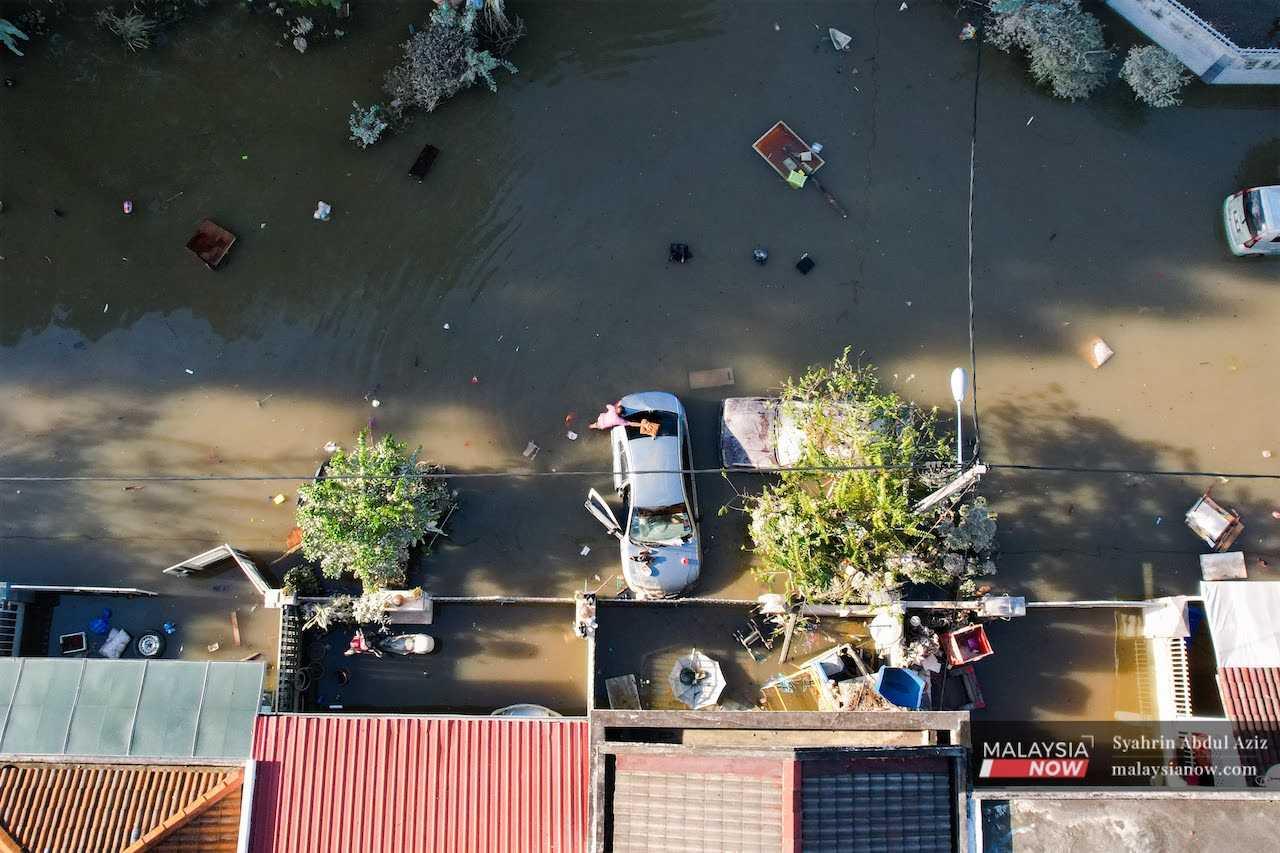Floods, rising sea levels threaten wave of poverty for homeowners
Housing areas in certain locations might no longer be safe, but residents would still have to pay their mortgages.
Just In
A data analyst involved in research on the property market has warned that thousands of families are at risk of falling into poverty as the annual floods and rising sea levels attributed to climate change and global warming affect the homes in which they live.
Cha-Ly Koh, founder and CEO of a data company, said such areas were mostly located adjacent to the Sungai Klang mouth areas of Port Klang and Shah Alam, as well as further north in the country's rice belt.
"Beyond the low-lying areas adjacent to the seas, areas located next to major rivers such as Sungai Klang will also be affected higher upstream," she told MalaysiaNow.
This in turn poses a risk to the financial health of residents, as property is normally bought with a mortgage.
In Malaysia, the longest tenure for loans is 35 years.
If floods begin to pose dangers to health and safety, Koh said, residents would have to relocate. And in order to do this, they will require money.
"Those with a mortgage will be forced to pay double rent," she said.
"Retired people with fully paid mortgages will also need to seek additional resources to rent in other places."
The Klang Valley, home to eight million people, is seen as the heart of the nation's economy. Last year, it faced some of the worst floods in recent memory, with several areas including Shah Alam, Hulu Langat and the city centre at least partially submerged.
Losses were estimated at over RM6 billion, with the flood situation expected to worsen in coming years.
Part of the problem has been attributed to overdevelopment and urban migration, with housing projects built even in flood-prone areas in order to meet the increasing demand.
Koh said local councils would do well to be more aware of the threats posed in these areas by floods and climate change.
Currently, she said, climate and sea levels are not factors of consideration in development approval.
Instead of embarking on more housing projects, she added, the authorities should take a closer look at home vacancy issues.
"Old neighbourhoods are left to collect value instead of housing younger generations who are priced out of the homes.
"Instead of building, I suggest that the government reactivate these homes in safer locations," she said.
She also cited data she had collected showing that homes in floodplains are lower in cost than those in other locations, meaning that those in the lower income bracket are more likely to suffer the most from floods.
She referred to the situation in some countries where the government offers buyout schemes if mitigation plans for homes in floodplains are too expensive. Affected properties are bought over by the government and residents are free to relocate.
Koh said this was similar to the land and property acquisition for Malaysia's MRT project.
She also warned of groundwater threats, describing this as an often overlooked problem.
"Seawater doesn't end at the coastline," she said. "It is a continuous body that places pressure on the groundwater in the soil.
"As the sea rises, despite the dykes that we build, we cannot prevent seawater from raising the groundwater table.
"This means that all of the areas in the floodplain will face challenges around the sanitation and water systems that rely on current hydrodynamic conditions."
Subscribe to our newsletter
To be updated with all the latest news and analyses daily.
Most Read
No articles found.
